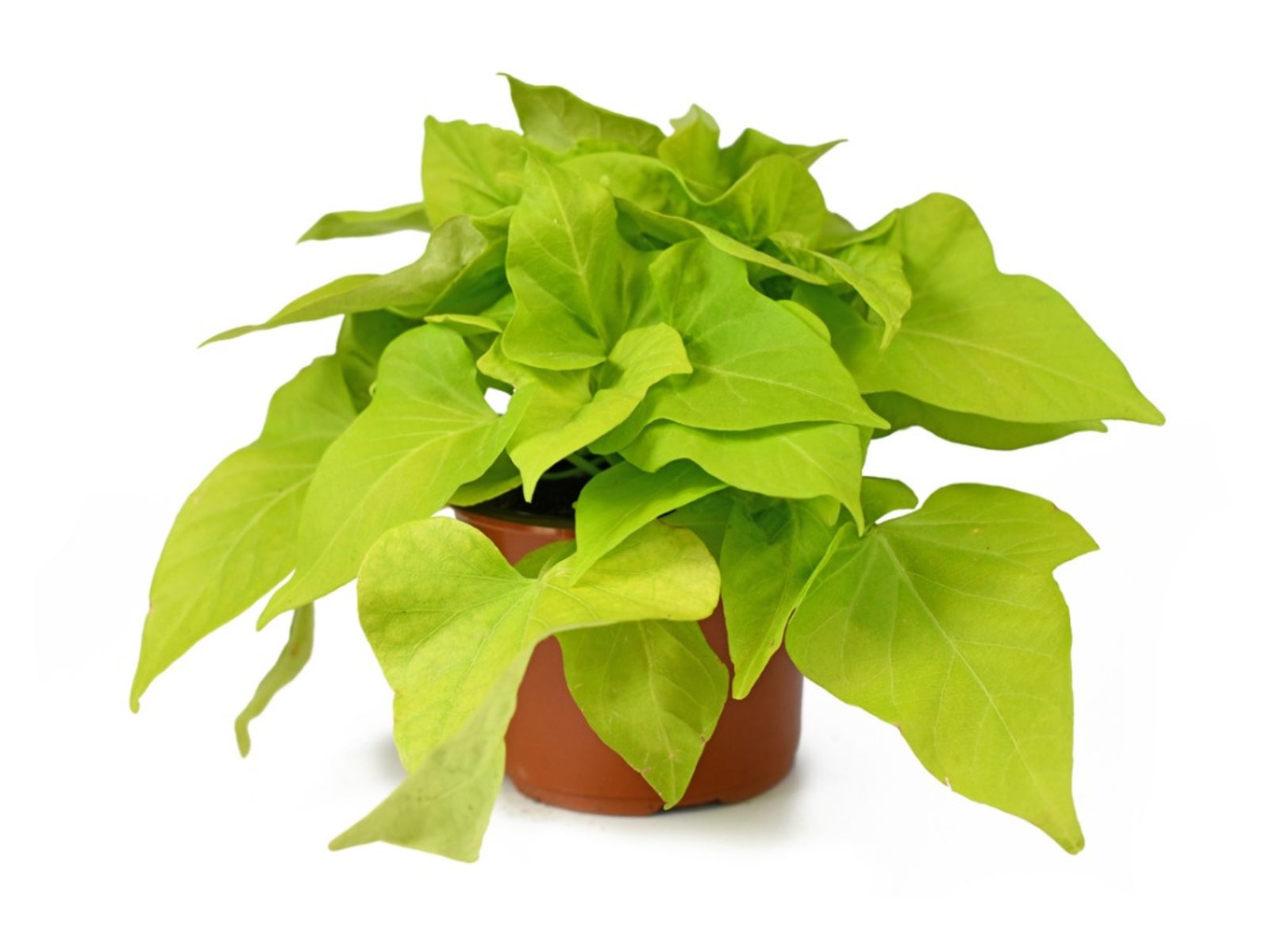Winterizing A Sweet Potato Vine: Overwintering Ornamental Sweet Potatoes


Sweet potato vines add tons of interest to a standard flowering basket or hanging container display. These versatile plants are tender tubers with zero tolerance for freezing temperatures and are often grown as throw-away annuals. You can save your tubers, however, and save a buck by planting them anew the following spring. There are three different methods for overwintering sweet potato plants. Which way you save your sweet potato vines over winter depends upon how much work you want to do and how cold your region becomes during winter.
Ornamental Sweet Potato Winter Care
Ipomoea batatas, or sweet potato vine, thrives in hot, tropical climates and is an ornamental foliage plant often used as a foil for flowering displays. This heat-loving perennial will die back if the plant experiences hard freezes below 32 degrees F. (0 C.). Yet, the tubers and even the plant in some cases, are easy to save for another season. Overwintering ornamental sweet potatoes can be done by heeling them in where temperatures don't often stay chilly, bringing them indoors, or by harvesting and storing the tubers.
Heeling in Sweet Potato Vines over Winter
If your region doesn't often receive sustained freezes, you can simply bury the container in which the vines grow in mounded soil. Then cut back the vine to just a couple of inches (5 cm.) and spread a thick layer of mulch around the container to act as a blanket to protect the roots. This is one way of winterizing a sweet potato vine. So long as the tubers don't freeze, the plant should spring back when warm temperatures arrive. The greenery may shrivel back, but the tubers are the source of the following spring's leaves and stems. You may also simply cover the buried container with burlap or a thick blanket at night when brief freezes occur. Pull it away during the day so the plant can harvest solar energy. Remember that occasional watering is part of heeled in ornamental sweet potato winter care. The plants will only need water once or twice per month in winter, as they are not actively growing.
How to Overwinter Sweet Potato Plants Indoors
Another way of winterizing a sweet potato vine is to simply bring them indoors. Again, in areas without sustained freezing, you can often simply bring them into a shed, garage, or another structure that is unheated but will prevent the tubers from freezing. In cooler climes, it is wise to bring the vines inside the home but, before you do, inspect them for insects. Treat with horticultural soap and a good rinsing if any little bugs are spotted. Then cut the vines back to 6 inches (15 cm.), dig up the tubers, and repot in good potting soil. Water them in and place the containers in a sunny window. Keep sweet potato vines over winter moderately moist and gradually reintroduce them to the outdoors when all danger of frost has passed.
Overwintering Ornamental Sweet Potatoes as Tubers
If you lack space or motivation to care for a vine over winter, you can always dig up and store the tubers. The tubers must be kept lightly moist, or they dry up and will not sprout again. Remove tubers from the container and separate them away from each other. Take off any greenery that still remains. Pack the tubers in some well-moistened peat moss or newspaper and place them in a cool, dark place. Check the tubers every week to ensure they stay moist and mist them if necessary. This is a bit of a balancing act, as the tubers cannot dry out entirely but too much moisture can cause mold and damage the tubers. Moderation is the word of the day. In spring, prepare containers or beds with plenty of organic material and replant the tubers. In no time you will again have the deep colors and attractively cut foliage of your sweet potato vines.
Gardening tips, videos, info and more delivered right to your inbox!
Sign up for the Gardening Know How newsletter today and receive a free copy of our e-book "How to Grow Delicious Tomatoes".

Bonnie Grant is a professional landscaper with a Certification in Urban Gardening. She has been gardening and writing for 15 years. A former professional chef, she has a passion for edible landscaping.
-
 Looking For Plants To Give You The Soft And Fuzzies? Try These 5 Fuzzy Leaf Plant Options
Looking For Plants To Give You The Soft And Fuzzies? Try These 5 Fuzzy Leaf Plant OptionsLovers of texture, drama, silver foliage and tactile plants will adore these special sensory garden additions. These fuzzy leaf plant options will leave you all aglow
By Susan Albert
-
 Get Ready For A Summer Of Hummers! Grow These Full Sun Hummingbird Plants and Flowers
Get Ready For A Summer Of Hummers! Grow These Full Sun Hummingbird Plants and FlowersIf you’re lucky enough to enjoy a sunny backyard, make sure you are maxing out on your pollinator opportunities and grow these full sun hummingbird plants and flowers
By Tonya Barnett